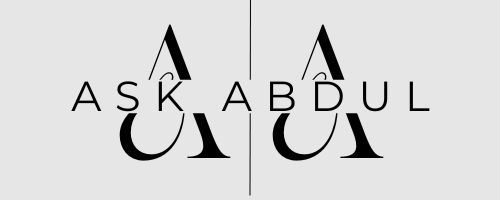Mastering Personalized Writing with ChatGPT

Mastering Personalized Writing with ChatGPT: Beyond Basic Prompts
Did you ever feel like you’re drowning in a sea of AI-generated content that sounds like it was written by a robot with a fancy vocabulary chip? Well, buckle up, ’cause we’re about to dive deep into the world of personalized AI writing – and trust me, it’s gonna be one heck of a ride!
Unleash The Power, UNLOCK, ELEVATE, or DELVE, my worst nightmare when I get these kind of responses from Chat GPT.
Our Aim To Get Rid of These Words For Good.
Problem with Basic ChatGPT Writing Assistant Prompt
So, what happens when you follow the advice of every self-proclaimed AI guru out there? You know, the ones who tell you to just paste in a few examples of your writing, tell ChatGPT to “write like me,” and voila! Instant personalized content, right?
So wrong.
Here’s what you actually get:
- A robot version of yourself that sounds about as natural as a cat barking
- Content that’s stuck in the uncanny valley between you and a machine
- Writing that’s just… off. Like wearing gloves on the wrong hand – it sort of works, but everyone can tell something’s not quite right.
Why doesn’t this work? Well, buckle up, ’cause we’re about to dive way deeper here.
Rules of the Game to Mastering Personalized Writing Style
Before we can bend the rules, we gotta know ’em. It’s like trying to win at poker without knowing what beats what – you’re gonna lose your shirt (and probably your dignity too).
1. Knowledge Cutoff: The AI’s Expiration Date
First things first – ChatGPT ain’t omniscient. Shocking, I know. Its knowledge has an expiration date, and depending on which version you’re using, that date is either January 2022 or April 2023.
What does this mean for you? Well, if you’re trying to write about the latest TikTok trend or last week’s blockbuster movie, ChatGPT’s gonna be about as helpful as a chocolate teapot. It’s working with old info, folks.
Pro Tip: Use plugins or targeted web searches to give ChatGPT up-to-date info. It’s like giving your AI buddy a crash course in current events before asking it to write that trending article.
2. Memory Limits: The Goldfish Brain
Ever tried to have a deep conversation with someone who forgets what you said five minutes ago? That’s kinda what it’s like working with ChatGPT sometimes. It’s got a memory limit of about 32,000 tokens.
“What the heck is a token?” I hear you ask. Think of it as about 3/4 of a word. So ChatGPT can remember about 24,000 words of your conversation before it starts getting a bit… forgetful.
Pro Tip: Keep an eye on your token count. There are Chrome extensions that can help with this. And when you’re getting close to the limit, use memory recall techniques to “save” important context. It’s like giving ChatGPT a little notebook to jot down the important bits.
- Workflow Best Practices: For related tasks not directly linked to your intended output, use separate chats/tabs or different language models (like Perplexity, Claude, Gemini, or Content at scale).
- Memory Recall: Employ memory recall techniques to hold onto the most crucial elements.
- Tip: After a few prompts as to recall memory by typing a prompt “ Go back and give me pointers about our earlier discussion about XYZ before the execution of this prompt that I’m about to write”
3. Tokenization: The AI’s Secret Language
Here’s where it gets really wild. ChatGPT doesn’t think in words like we do. It thinks in tokens. And sometimes, a word can be split into multiple tokens in ways that might not make sense to us mere mortals.
For example, a one word can be tokenized in four different ways depending on the context.
Mind-bending, right?
Pro Tip: When you’re giving ChatGPT instructions about words to use or avoid, give multiple examples. It’s like teaching a kid what “red” means by pointing out different red objects, not just saying “red is red, dummy!”
How to make ChatGPT act like a person?
Talk to Chat GPT Like a New Intern
Alright, now we’re getting to the good stuff. To get ChatGPT to write like a human (specifically, like you), we need to turn writing into a science. It’s like creating a DNA profile of your writing style.
Think of ChatGPT like a new hire at your company. You wouldn’t hand them a manual on their first day and expect them to nail every task. Nope, you’d walk them through the process, step by step, offering guidance along the way. The same goes for getting the best out of ChatGPT. Instead of tossing in a massive prompt and hoping for the best, it’s about having a conversation—providing examples, giving feedback, and building up from there. The more you engage with it, like teaching someone a new skill, the better it gets at delivering exactly what you need.
Here’s how you do it:
ChatGPT Writing Style Prompts to Mastering Personalized Writing
1. Upload Your Writing Samples: But don’t just paste ’em in! That’s amateur hour. We’re going pro.
- Analyze in Detail: Ask ChatGPT to break down your writing style like it’s dissecting a frog in high school biology. Here’s what you want to know:
- Words per post/sentence/paragraph
- Sentence length distribution
- Frequency of literary devices (e.g., metaphors, rhetorical questions)
- Most commonly used words and phrases
- Tone, rythem, and sentence layout
Create Rules: Turn these insights into guidelines for ChatGPT to follow. It’s like creating a style guide, but for an AI.
Let’s break this down with an example. Say you’ve uploaded some of your writing samples. Here’s what you might ask ChatGPT to do:
“Use this When you want a content for Social Meda Post”
Please examine the given posts in detail and provide the following insights for each:
1) Breakdown of the text-to-emoji ratio
2) The most common emojis used
3) Total word count in each post
4) Average word count per sentence
5) Number of line breaks in each post
6) Percentage of sentences that fall into these categories:
7) The tone of the writing (e.g., casual, formal, humorous)
8) The structure of sentences and rhythm of the text
9) Average number of sentences in a paragraph
10) Most frequently occurring words (excluding common ones like “and” or “the”)
11) Unique phrases or expressions found
12) Average number of lines in a paragraph
This might seem daunting, but it’s the difference between AI content that sounds like a robot trying to be cool and content that sounds like it came straight inside of you to the page.
How to make ChatGPT your personal coach?
Use T.A.R Method
1. TRAIN: ChatGPT Custom Instructions for Writers
This is where you take all that analysis we just did and use it to train ChatGPT. You’re essentially creating a mini-you inside the AI. Creepy? Maybe a little.
Here’s what you tell ChatGPT:
“For this chat, you’ll be replicating my writing style. Here are the key characteristics:
- My average sentence length is lets say 15 words
- I often use phrases like ‘yeah’,’ ‘bingo,’ and ‘gotcha, or pumpkin’.
- I use short, punchy sentences in the writing not more then 10% of the time
- My paragraphs are typically 5 sentences long
- My tone is generally casual or sarcastic
- I tend to use emojis, with an average of 5-10 per post
- I usualy ask rhetorical questions to engage the reader
Please keep these characteristics in mind when writing.”
2. ASSIGN and Execute: Asking for Your Content Back
Now that ChatGPT is primed with your style, it’s time to ask for your content. But remember, we’re not just throwing a basic prompt out there. We’re referencing the “rules” we’ve established.
Here’s an example:
“With the above style guidelines in mind, please write a blog post about how generative AI is changing the advertising industry. Make sure to:
- Use a mix of short and long sentences
- Include at least one rhetorical question
- Use my characteristic phrases naturally throughout the text
- Maintain a casual, slightly humorous tone
- Break up the content with subheadings and bullet points for readability”
3. REFINE: Your AI-Generated Content
Now, don’t expect perfection on the first try. Even with all this prep, ChatGPT might not nail your style 100%. That’s where the “Refine” part comes in.
Read through the generated content. Does it sound like you? If not, what’s off? Maybe it’s using your catchphrases too much, or the sentence structure isn’t quite right. Give ChatGPT specific feedback:
“This is good, but can you:
- Vary the sentence structure more – it feels a bit repetitive
- Tone down the use of ‘Bingo’ – I use it, but not in every paragraph
- Add more concrete examples to support the points
- Throw in a pop culture reference or two – that’s something I often do in my writing”
Remember, this is a collaboration between you and the AI. It might take a few rounds of back-and-forth, but the result will be worth it.
The Result? AI-Generated Content That Sounds Human
When you follow this process, you’ll end up with content that’s:
- True to your unique voice and style
- Varied in sentence structure (short, punchy lines mixed with longer, flowing ones)
- Actually engaging for your readers
- Packed with your favorite phrases and other stuff
Here is an example
“Generative AI? Wow, it’s turning the medical world on its head! Imagine diagnoses that truly understand your health—like, on a deep level. That’s AI magic happening right there. We’re talking about systems that might know your body better than your own doctor. A little unsettling? Maybe. Super effective? Absolutely.”
But here’s the big question: are we prepared for this advertising shake-up? Because it’s not just tapping on the door—it’s barging in and rearranging the whole house while it’s at it.
So, what’s a sharp marketer supposed to do? Roll with the changes, that’s what. Get familiar with the tools, experiment with the technology, and seriously, don’t be the last one to jump on board. In this bold new era of AI-driven ads, the early bird doesn’t just get the worm—it takes home the entire harvest.”
Wrapping It Up: The Future of AI Writing
Mastering personalized writing style using ChatGPT isn’t just transforming the content creation game – it’s rewriting the rulebook entirely. But here’s the thing: it’s not about replacing human creativity. It’s about enhancing it. So, what’s your next move in the world of personalized AI writing? Are you going to get in on the action, or are you going to get left in the dust? Generative AI isn’t a game-changer – it’s the new game-maker. Step up or step aside, because the future of personalized content using ChatGPT is here, and it’s wildly exciting! Ready to take your writing to the next level? Give these techniques a shot and watch your content transform from generic to genuine. Let me know how it goes – I’m betting you’ll be pumped about the results!
Here is another article I found interesting to refer if you need to learn the initial structure
P.S
Now, if you’ll excuse me, I’ve got some AI to train. This content ain’t gonna write itself… well, actually, it kind of will. But you know what I mean!






